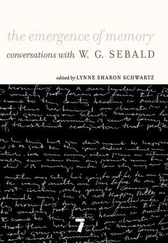One of the first guys, who is Japanese, met his wife while doing capoeira, they eventually had a child, and we actually went to their wedding in Japan; I did the best man’s speech. It was quite an experience to be a best man at a traditional Japanese wedding.
Back in Shanghai, I was teaching only super basic stuff because my teacher was teaching only very basic stuff. So, I was doing very simple capoeira, and we were hanging out after the class; the vibe was good. When the winter came, an English fellow proposed to use the facility that was in his compound. So, we went there and started to train once a week sharing the rent. We were having easy classes for one hour, then we would go outside to have drinks. This kind of vibe brought a lot of people. Let’s say, there were 20 people training, all expats, foreigners from all over the world. It was really fun.
But the capoeira was… let’s say – bad; the technical part of capoeira that is.
Curiosa: Did you do any music back then?
Diego: Yes, we did music. I was doing my best. I learned there by myself how to actually play berimbau. I knew basic songs, but it was a challenge. I had to lead the rodas, so for me, music was always twinned with capoeira. One Italian guy was really advanced in the movements, but, for him capoeira was without music, so we never really got in touch with him. I wanted him for his movements, I wanted him to come to classes but then it never happened actually – he was just a performer, not a capoeirista.
So, after that, I came back to Italy for holidays, it was in 2007, and the mestre of the group, Mestre Alemão 35 35 A lemon.
, was teaching in Genoa, but he was giving a workshop in Napoli. I was paying and supporting the class and at the end of the workshop, he pointed at me and said, “I heard that you are teaching and doing capoeira there, but that there is no mestre; I don’t think that’s a good idea. You shouldn’t teach what you learn here, you shouldn’t train capoeira without a mestre.”
So basically, I was kicked out of the group because according to him I was supposed to quit capoeira from the beginning because there was no mestre there. So that was the end of the story with that group.
Then at the end of 2007, I met Mestre Marcelo. He contacted me by email. He said that he was going to Japan, he had found their capoeira group in Shanghai while searching the Internet and could teach a workshop there.
Curiosa: But how did he find you?
Diego: He found us on the Internet, we had a group there, with an email address on the page. He was curious. He was in Asia and wanted to see what’s going on in Asia. There was no Facebook at that time, there was no social media. A I had no idea who he was. First, because my capoeira education was really low. Second, there was not much Internet use at that time. So, I was really scared about inviting a Brazilian guy to Shanghai and paying for airplane tickets – it was something that I have never thought about. But eventually we came to an agreement: I trusted him, he trusted me. So, we bought his tickets to Shanghai and he gave a workshop. We were roughly 20 to 25 people; we were friends basically. So, he taught the workshop and we were all very impressed. I had never before witnessed such beautiful capoeira. He was in his 40s and he seems to have been in the best capoeira form of his life. Whatever movement he was doing, from the ginga to the macaco 36 36 A jumping movement in capoeira from the squat back to the arms.
, it was amazing, it was something I had never seen, for my capoeira had been limited to what I had learned in Napoli.
Curiosa: What kind of capoeira was it?
Diego: It was more regional, I believe. Keeping in mind that my style was super bad. I am still fighting to get rid of it to this day.
So, it was really a big revelation for us, we were inspired by him. Not only that, we were also inspired by his philosophy, his idea, and his vision of capoeira. The thought came to my mind, “Ok, this is what I have been looking for in capoeira.” Maybe I felt there was more to capoeira, but I never knew because I was in the different world. So, at the end of the weekend, we talked and we actually had this connection; he agreed to have us as part of his group, Mandinga, and to support us. And this support was not just lip service because, in March 2008, four months after the workshop, he sent to Shanghai a contra-mestre, Mexican Contra-Mestre Cipó 37 37 A vine.
. And he taught classes every day for 3 months. He was really good and really tough. The group was halved because classes were too tough but for the people who stayed, they really learned capoeira, gained an understanding of Capoeira Mandinga, and came to understand what it means to train capoeira. It was like walking through the fire, we were really exposed to the top notch stuff. After these 3 months, we invited two more teachers of Mestre Marcelo. It was a couple: an American contra-mestra and a Brazilian professor. They were a married couple and they came to Shanghai for 3 more months from July to September. They helped us organize our first Batizado. which we had in September; they also taught very technical capoeira, very Mandinga/Cordāo de Ouro style. So, having that full immersion with them turned out to be very vital and life changing.
Curiosa: And what belt did you get during that Batizado?
Diego: Yellow belt. It was my first belt ever because my old group also never had a Batizado at that time, so I never had any belt.
Curiosa: How long did it take you to receive that belt and why?
Diego: After 7 years, but I wouldn’t count all 7 years because for me, the first three years were wasted and when I was in Shanghai teaching, I was learning some bad berimbau technique and in capoeira I was reviewing some kicks. I was just involved in some capoeira moving but still keeping it very basic. So, as you can see, that year was very important for me.
Then we invited other teachers from Mandinga school during the following years. But for me, those 6 months were the key. I was taking daily notes from all the classes, so I had material for years. This is what I have been doing after, rearranging something of course.
Curiosa: Why did you decide to stay in Shanghai?
Diego: I found an internship, and in 2007 I was contracted by a bank. I was working there and teaching capoeira in the evenings.
Curiosa: What are the major milestones in the development of your group in Shanghai?
Diego: The first Batizado was of course an important milestone. Then, I don’t remember the exact year, one female student, named Morena 38 38 A brunette.
, who had been training with me almost from the beginning, moved to Beijing. I think it was in 2011 or 2012.
There was also a group of people that were always present at our events, they were struggling with their training and they wanted to become a part of Mandinga, but we never got organized.
She went there and she took over, so she started to teach classes and they organized a group and they grew a lot, and it became a Mandinga group.
Another milestone was when Alex Chupateta moved to Hangzhou and started a group there. It was very funny. The first time he came to my class in 2008, he was speaking Chinese; he couldn’t speak a word in English and his only language besides Russian was Chinese. I was able to speak Chinese, so we were communicating in Chinese in the beginning. He was already in love with capoeira; he was super committed, and eventually he learned English and Portuguese. And when he moved to Hangzhou he started to teach there. Now he is back to Shanghai, but the Hangzhou group is still there.
Читать дальше












